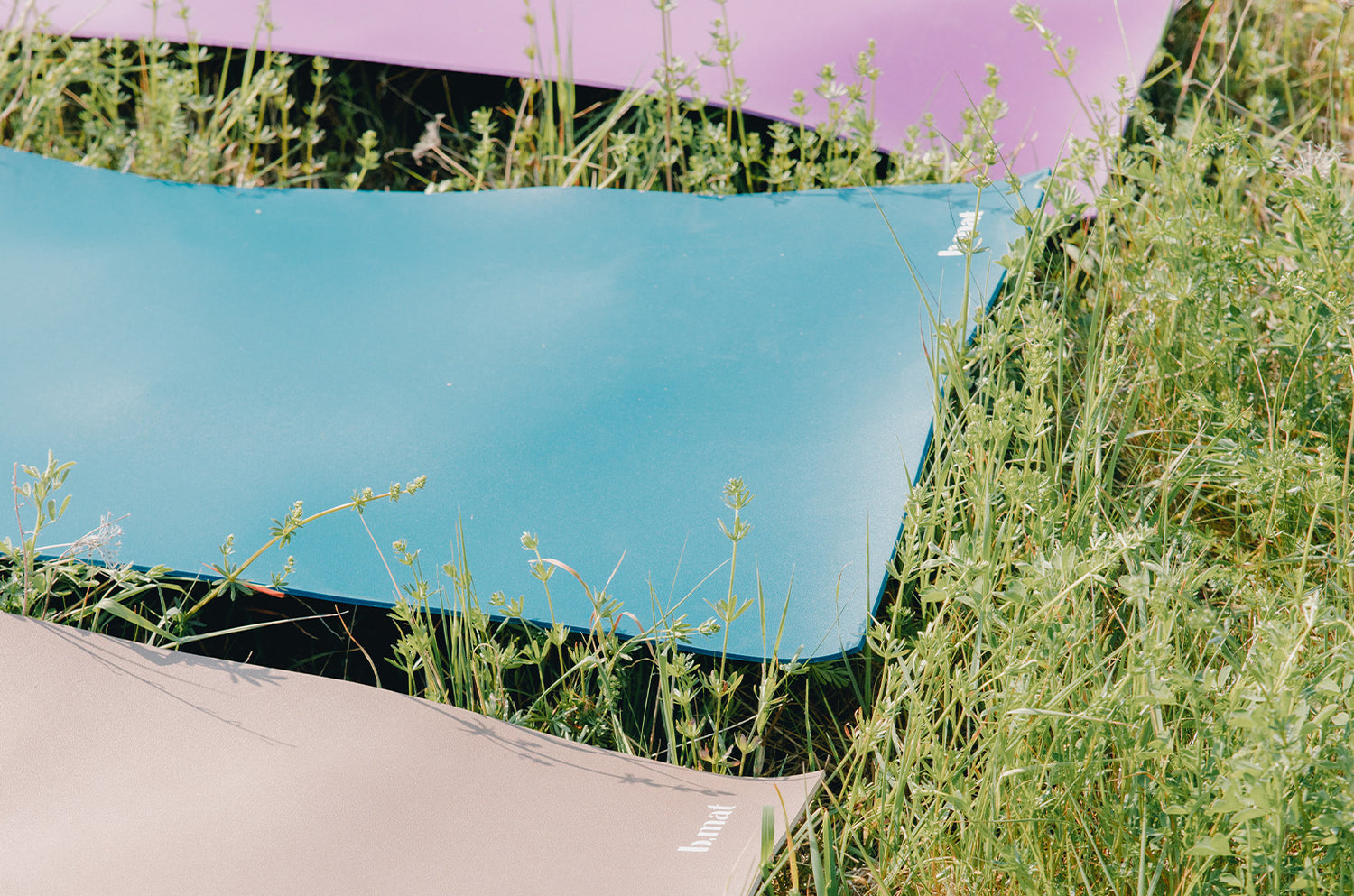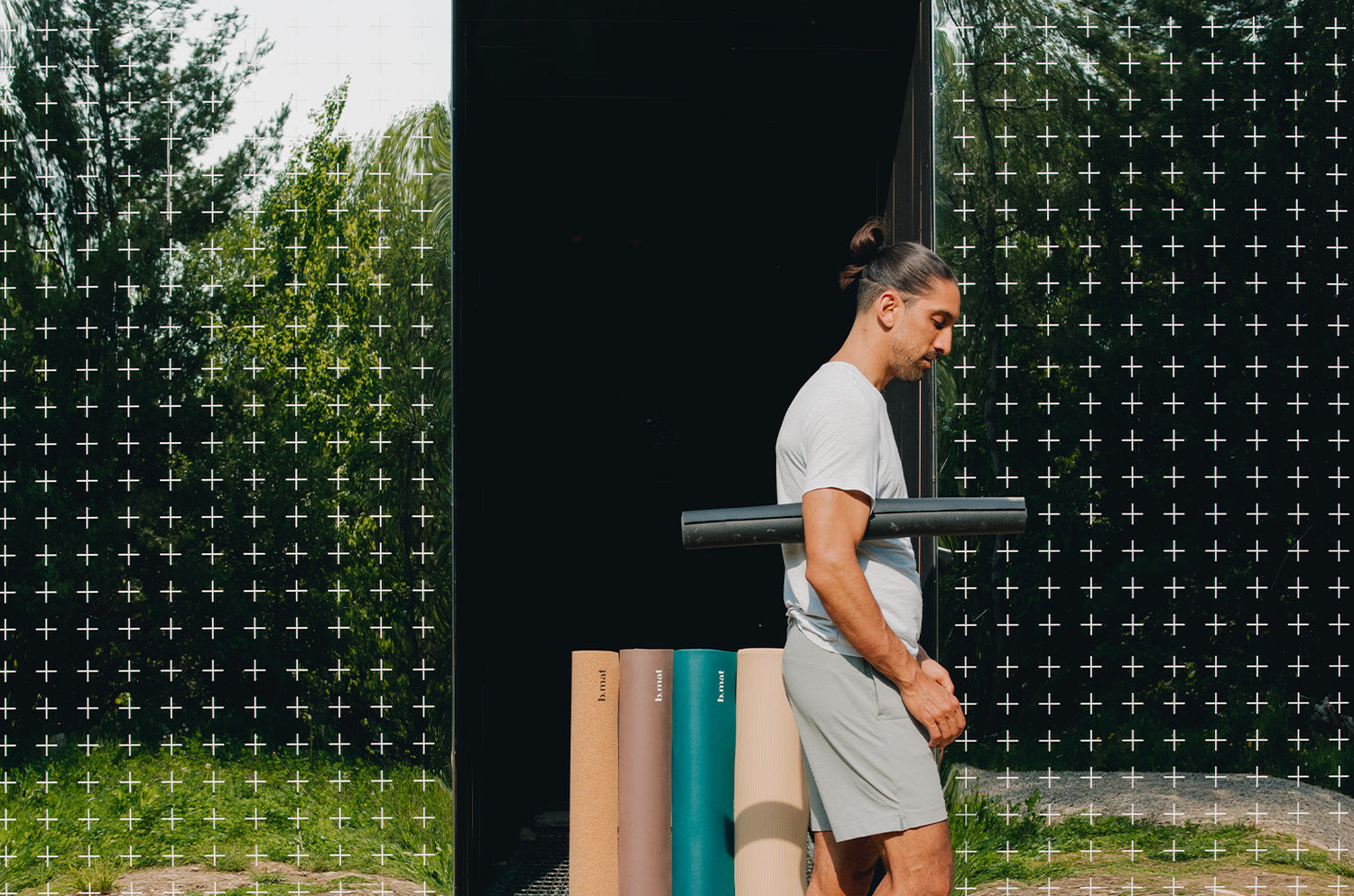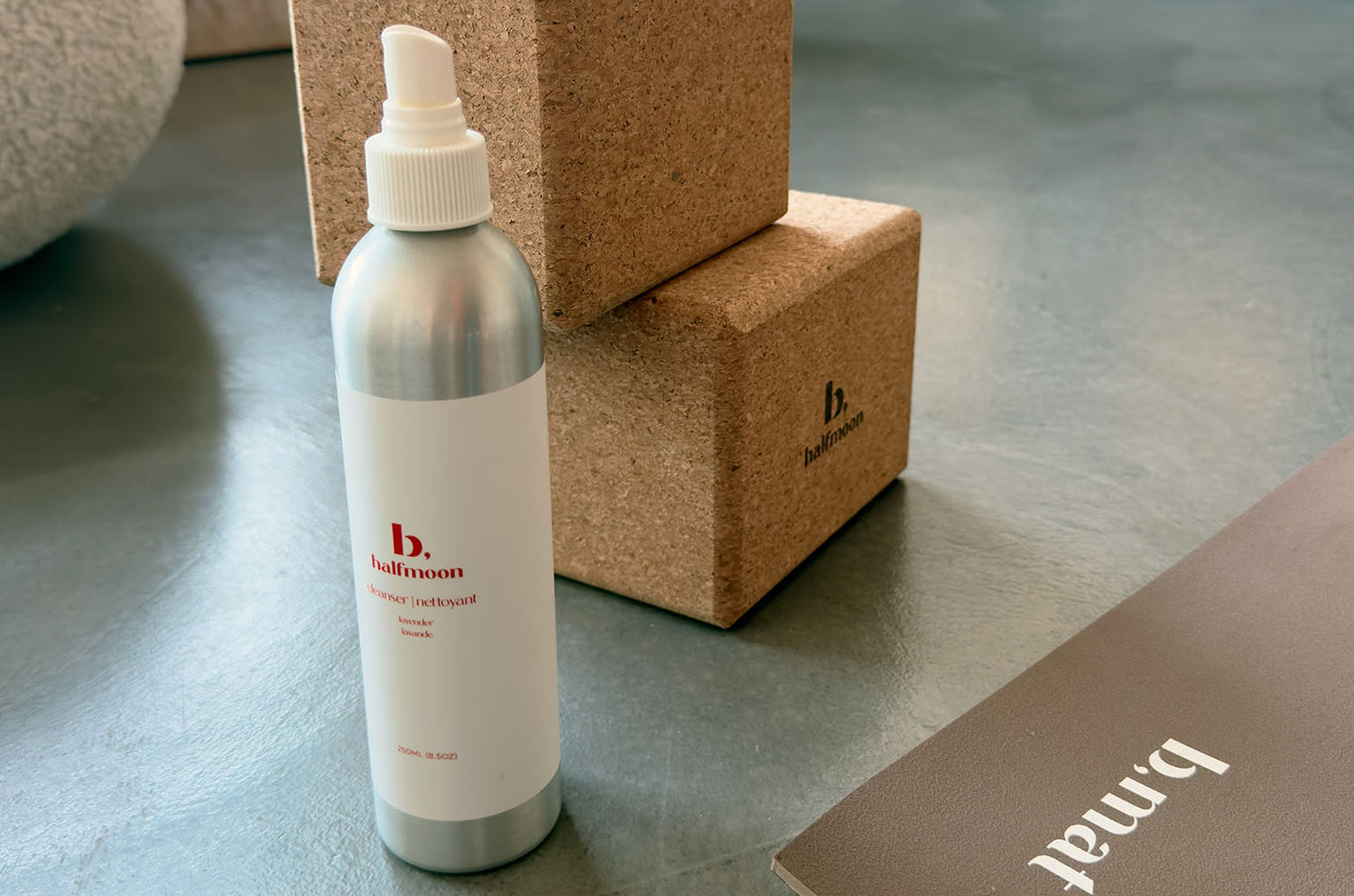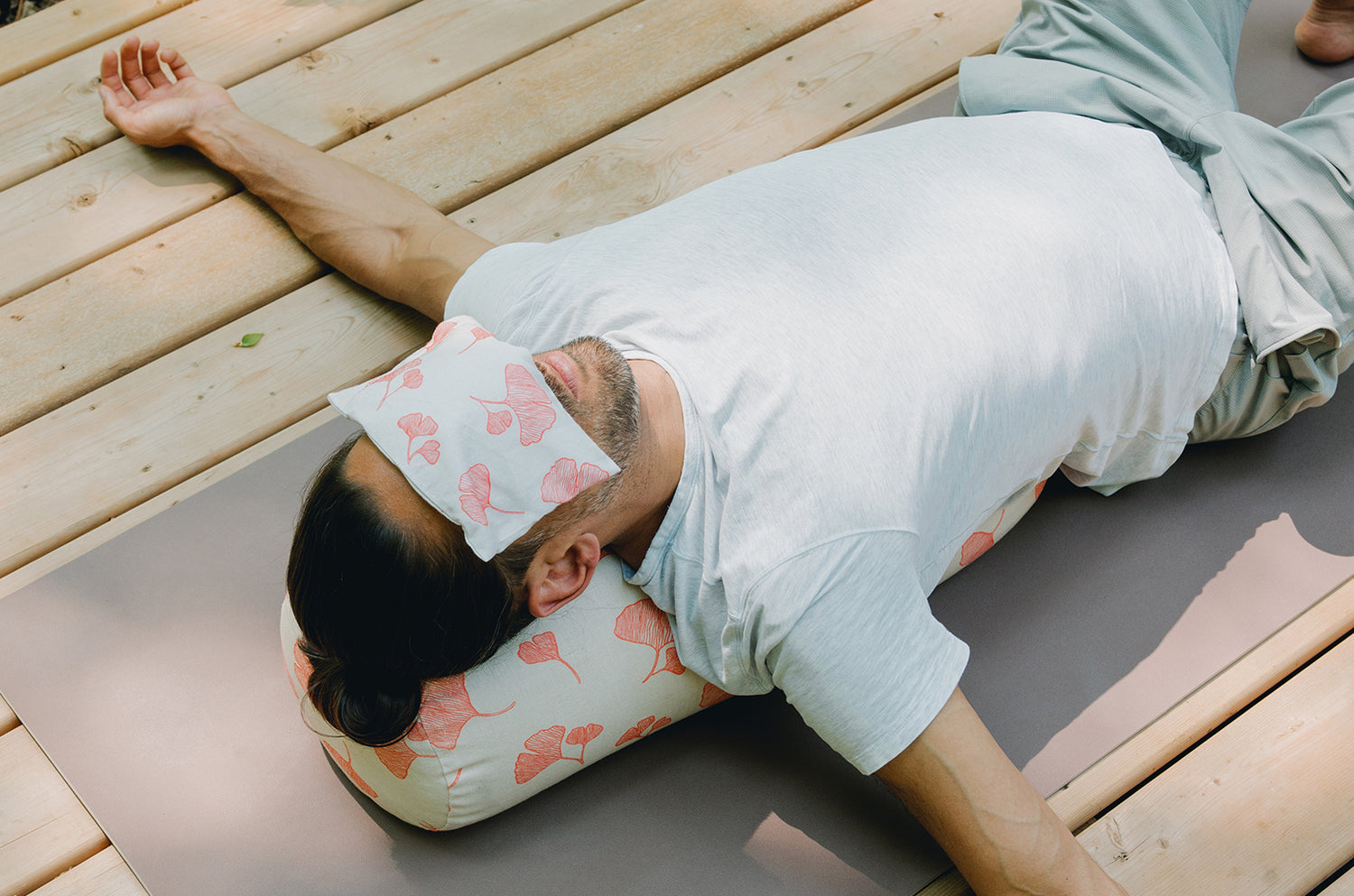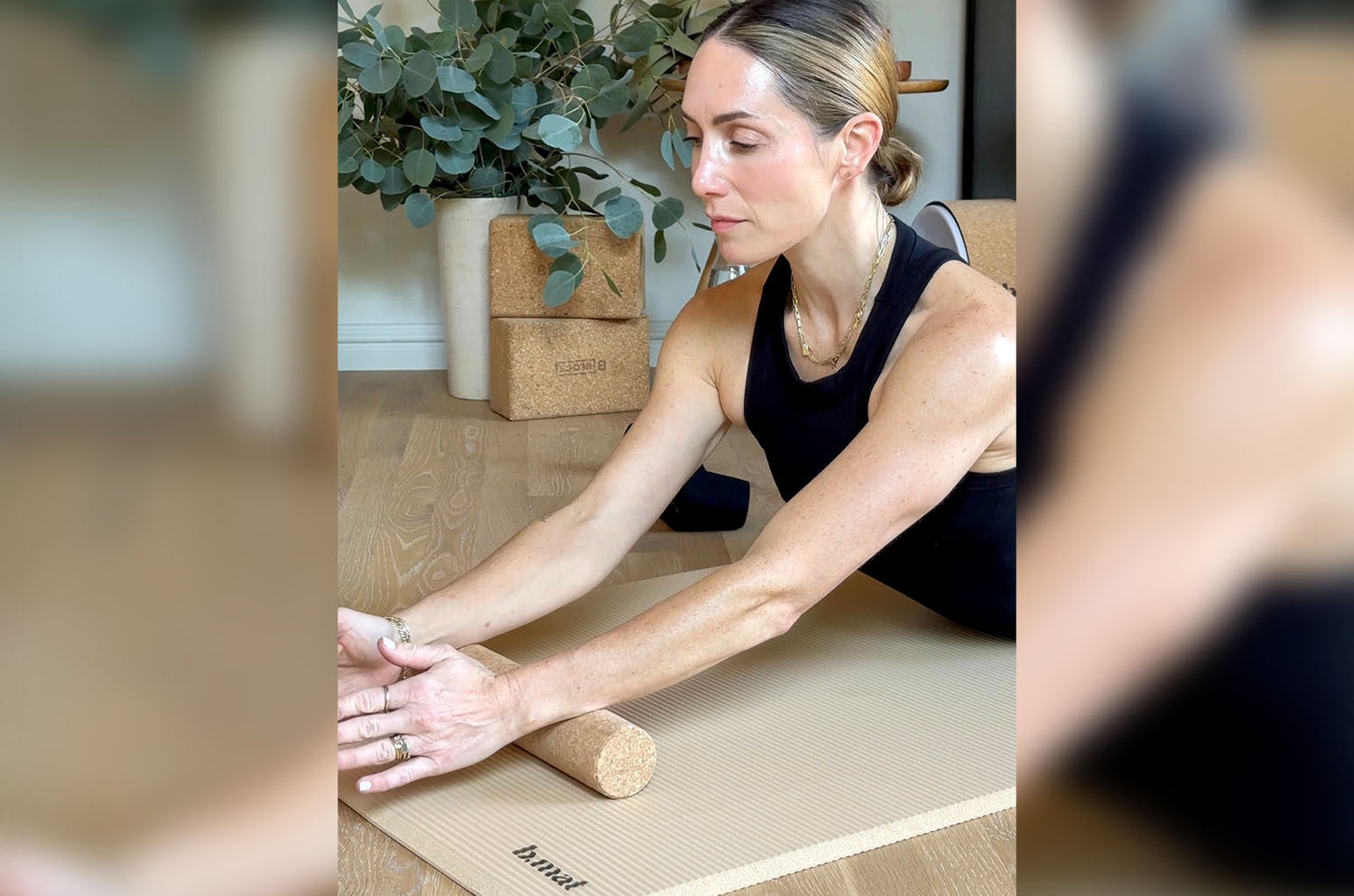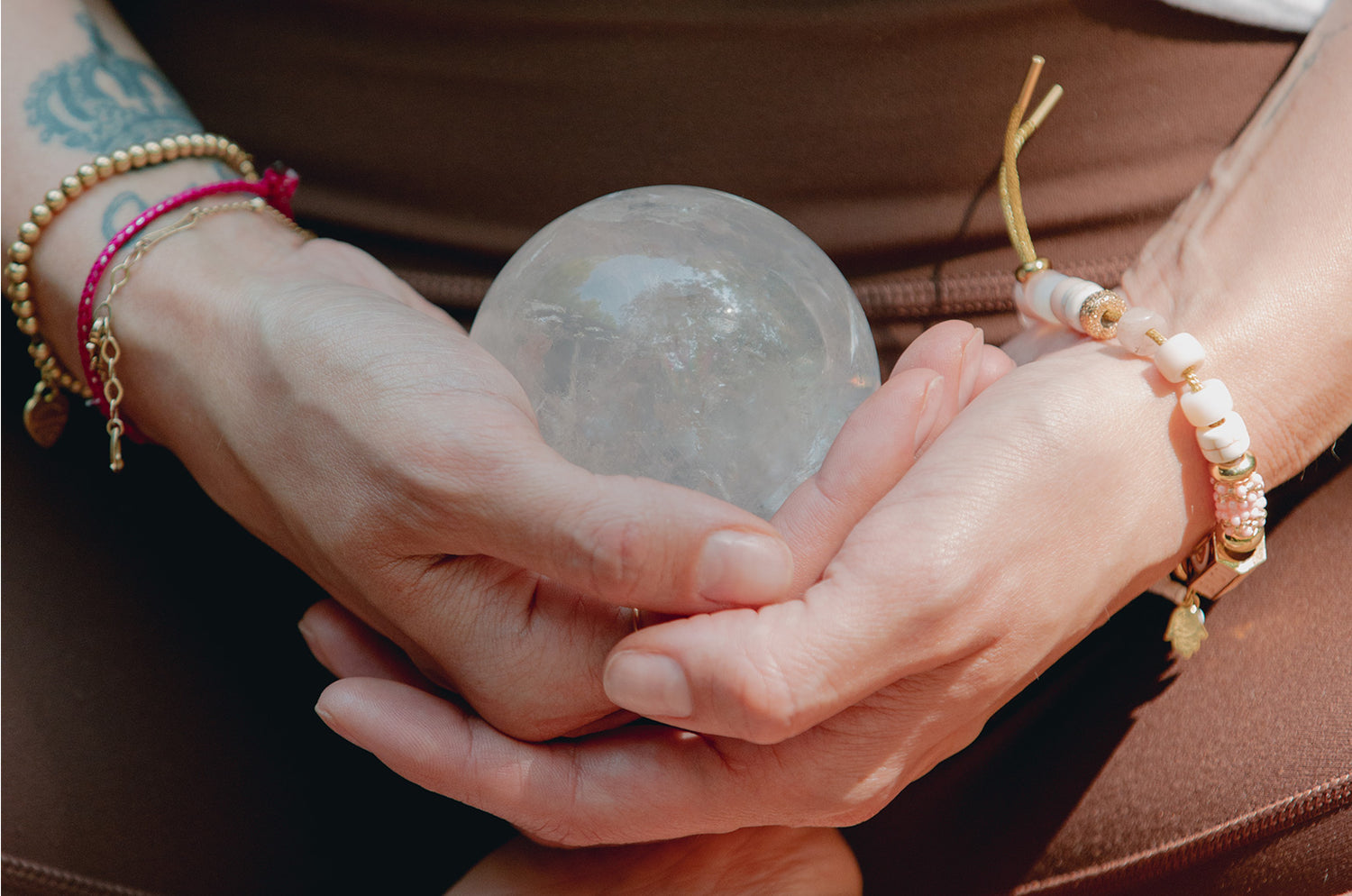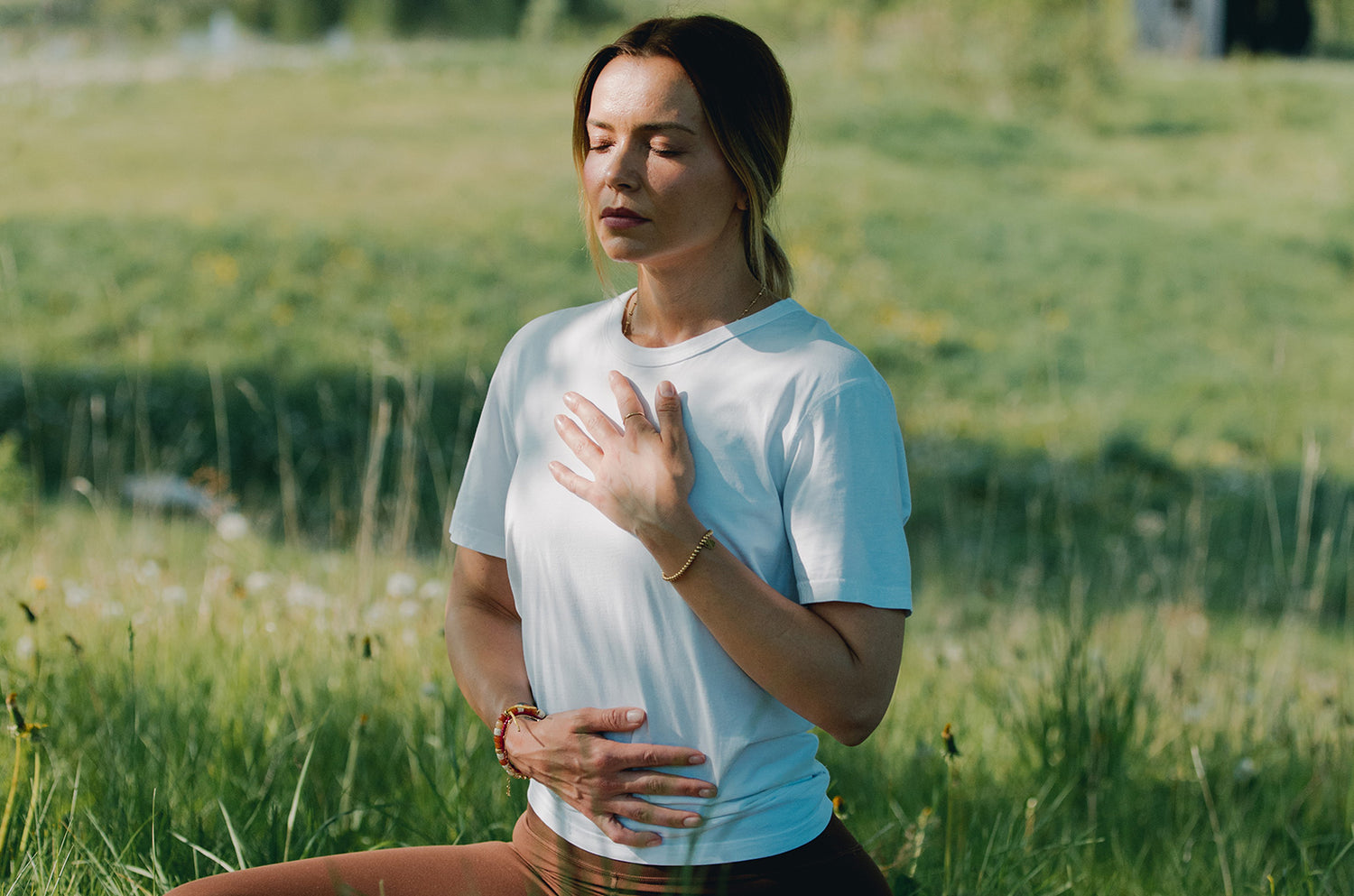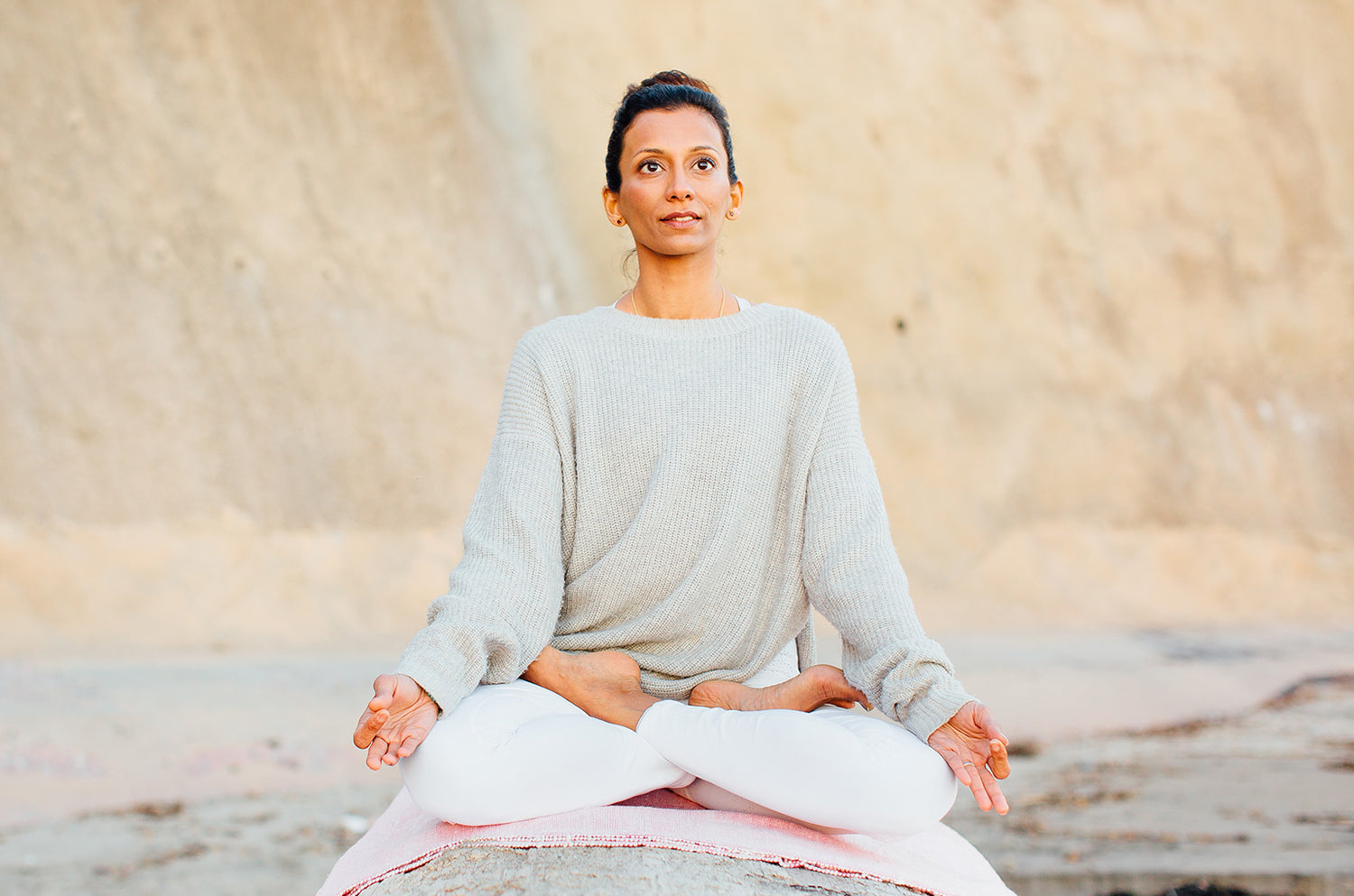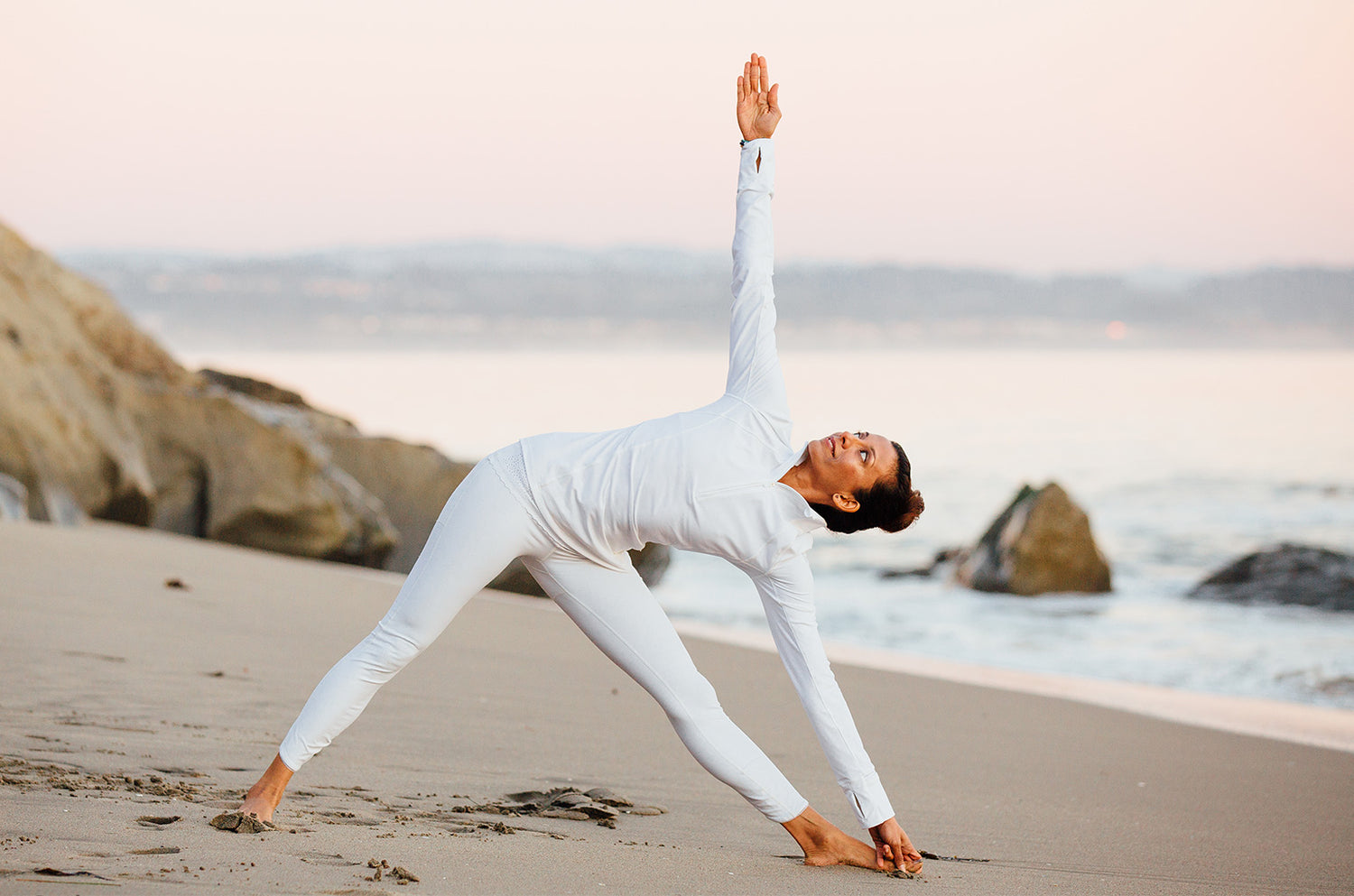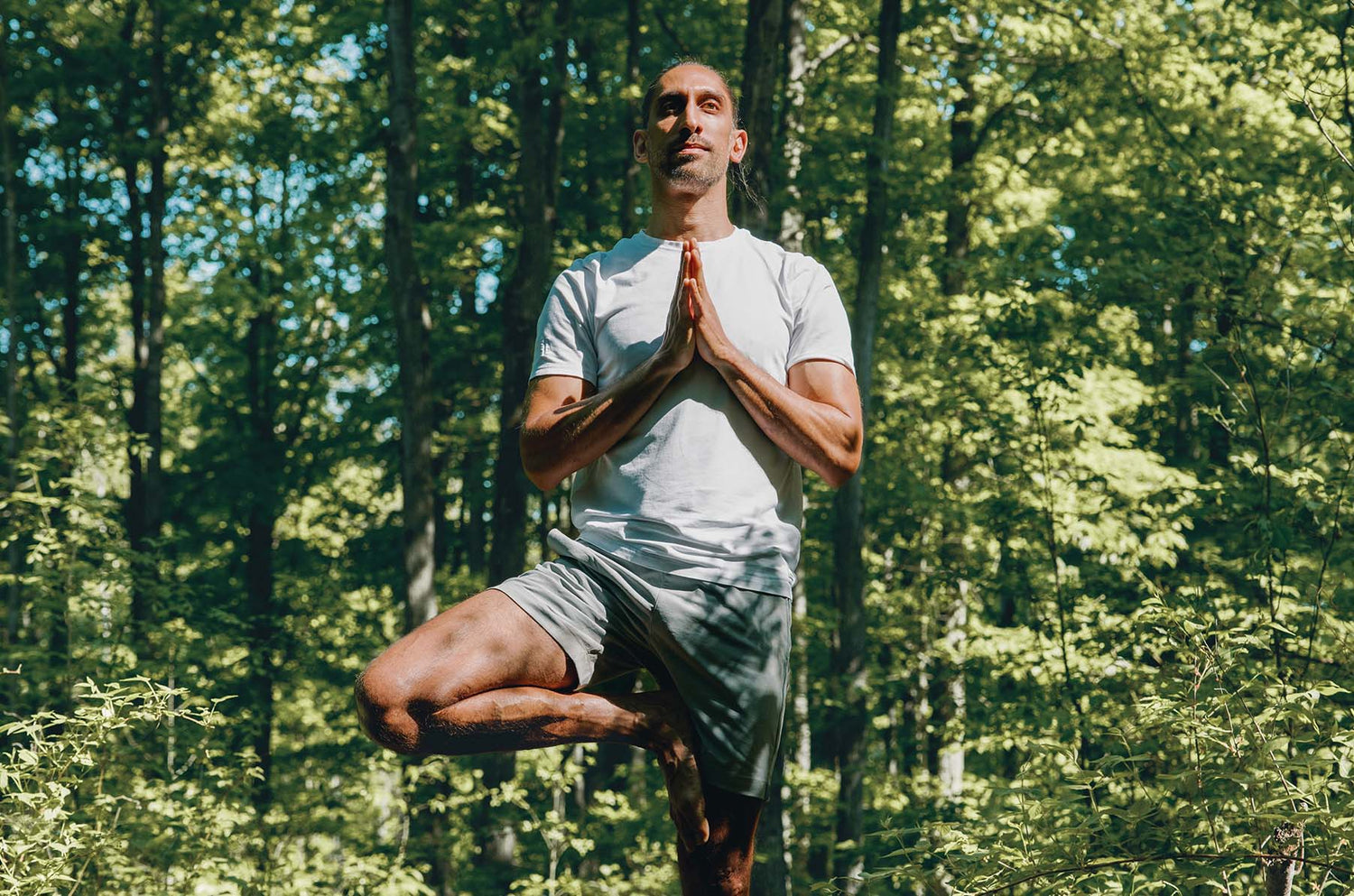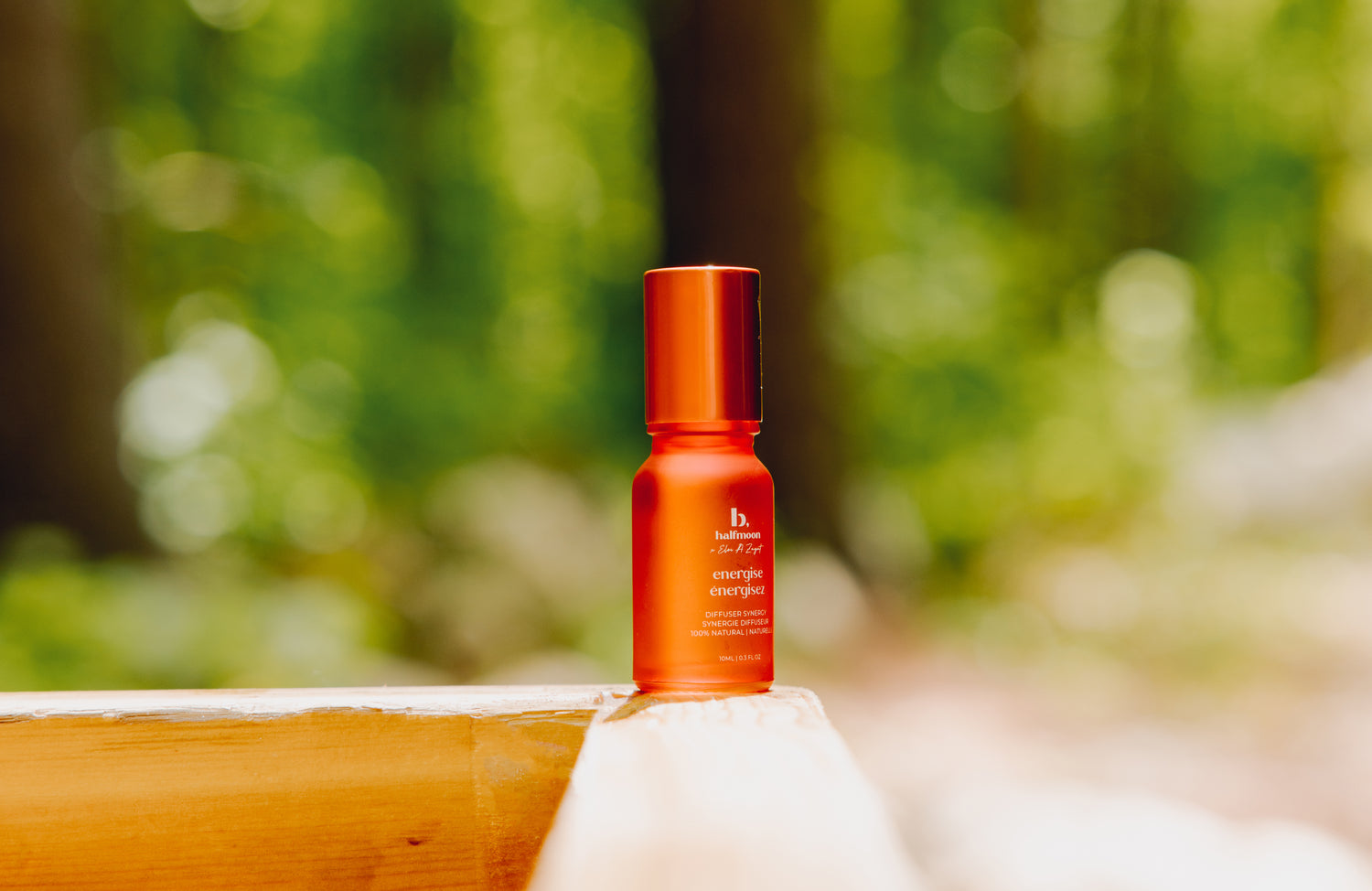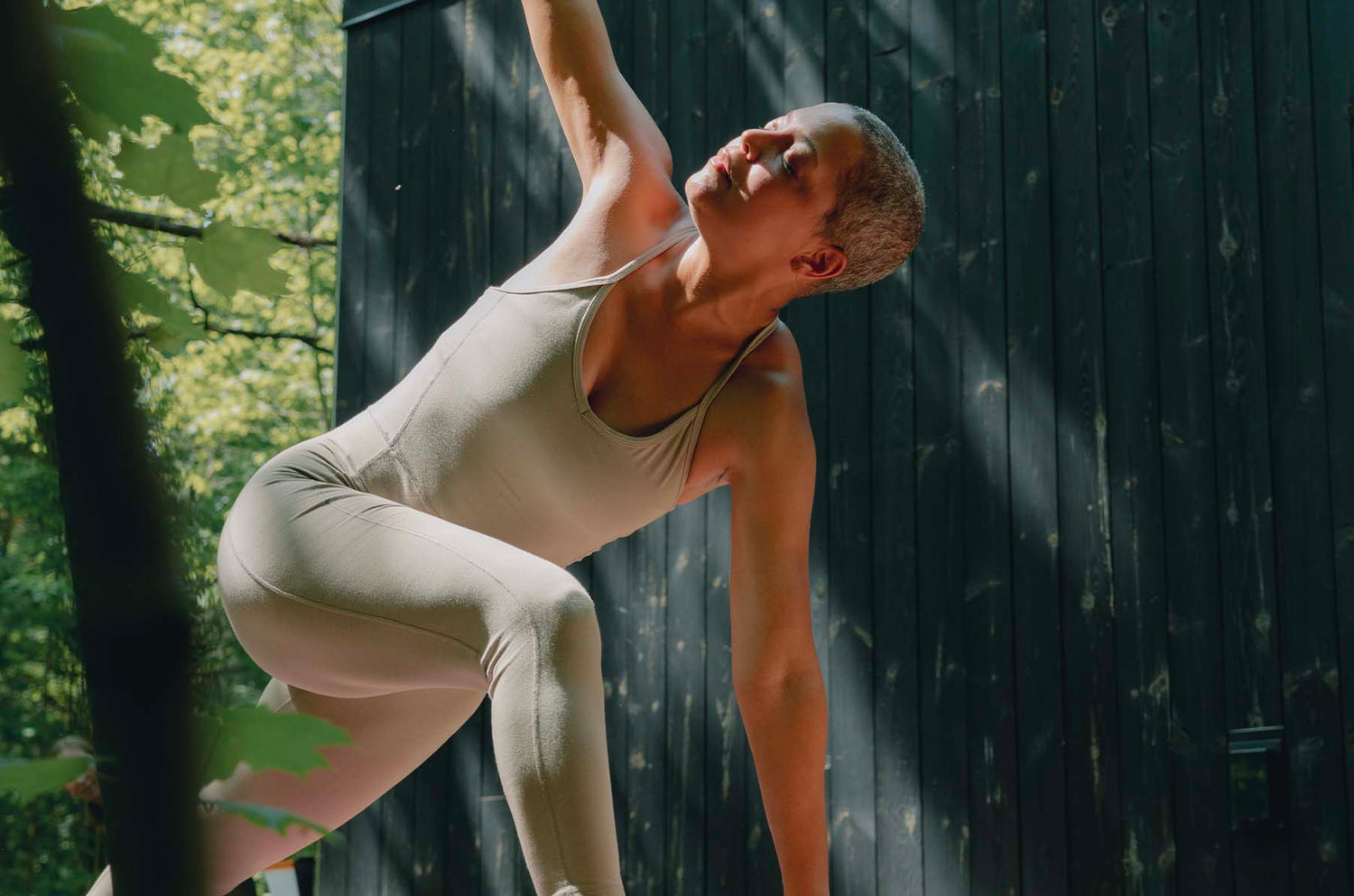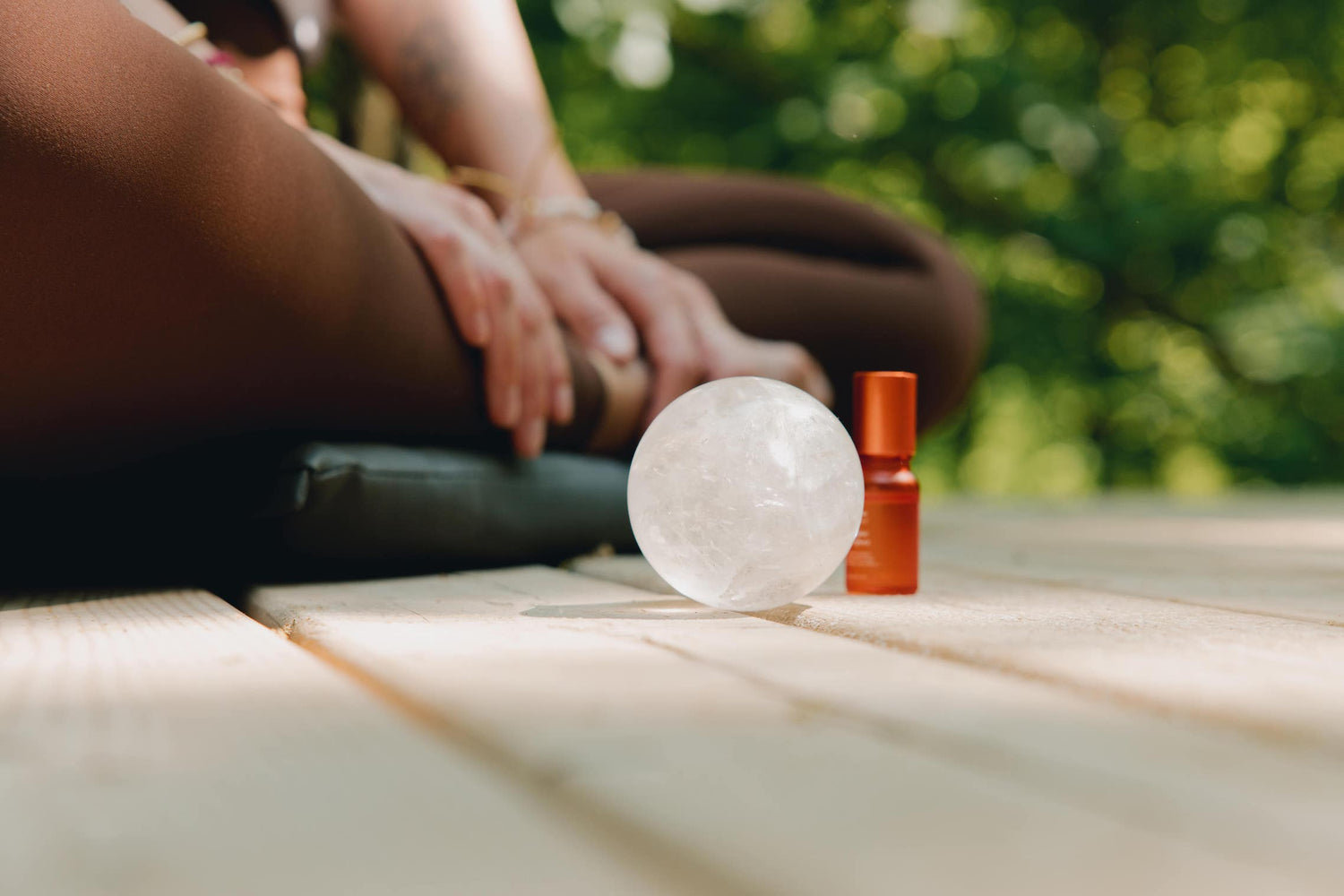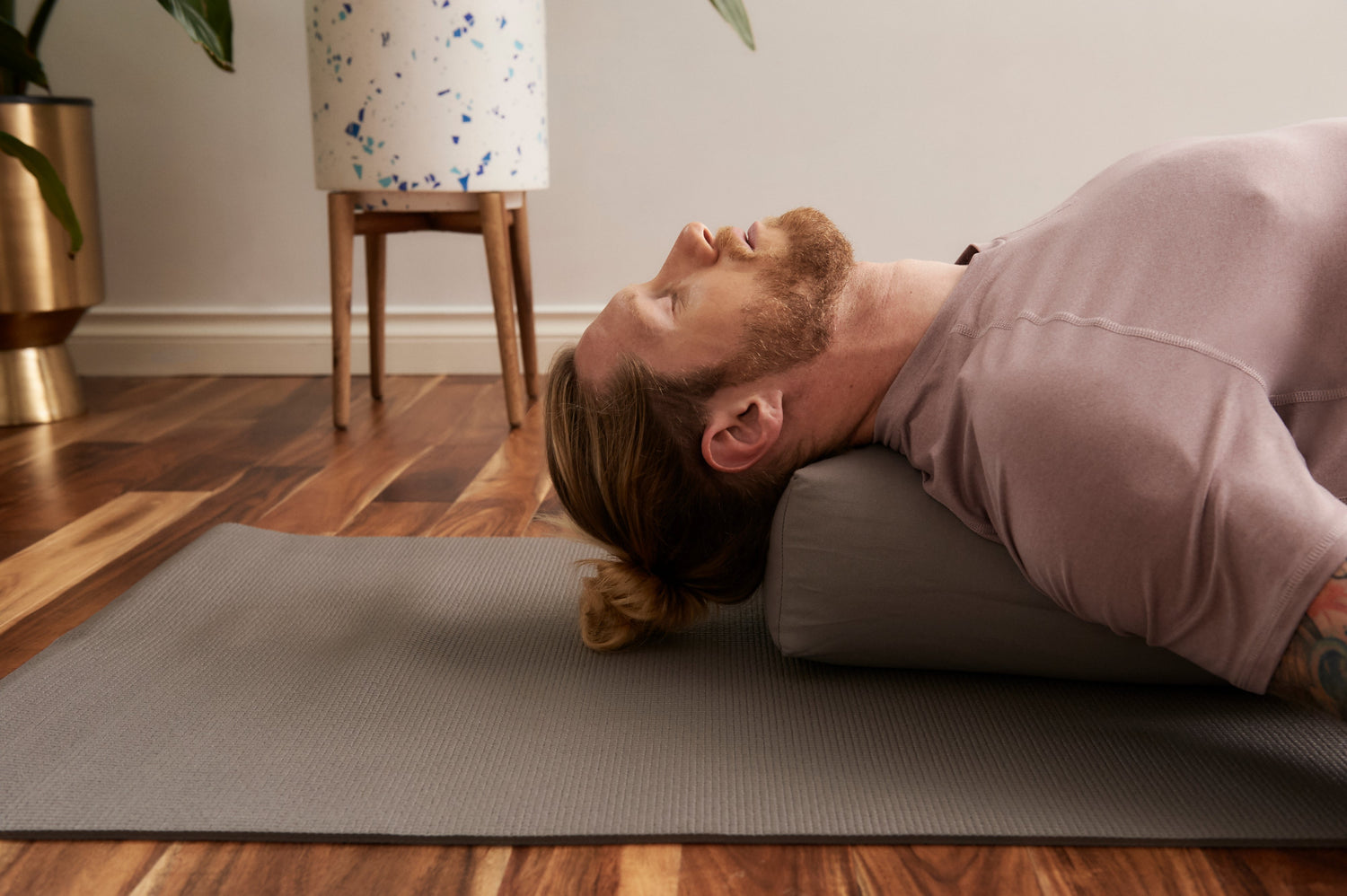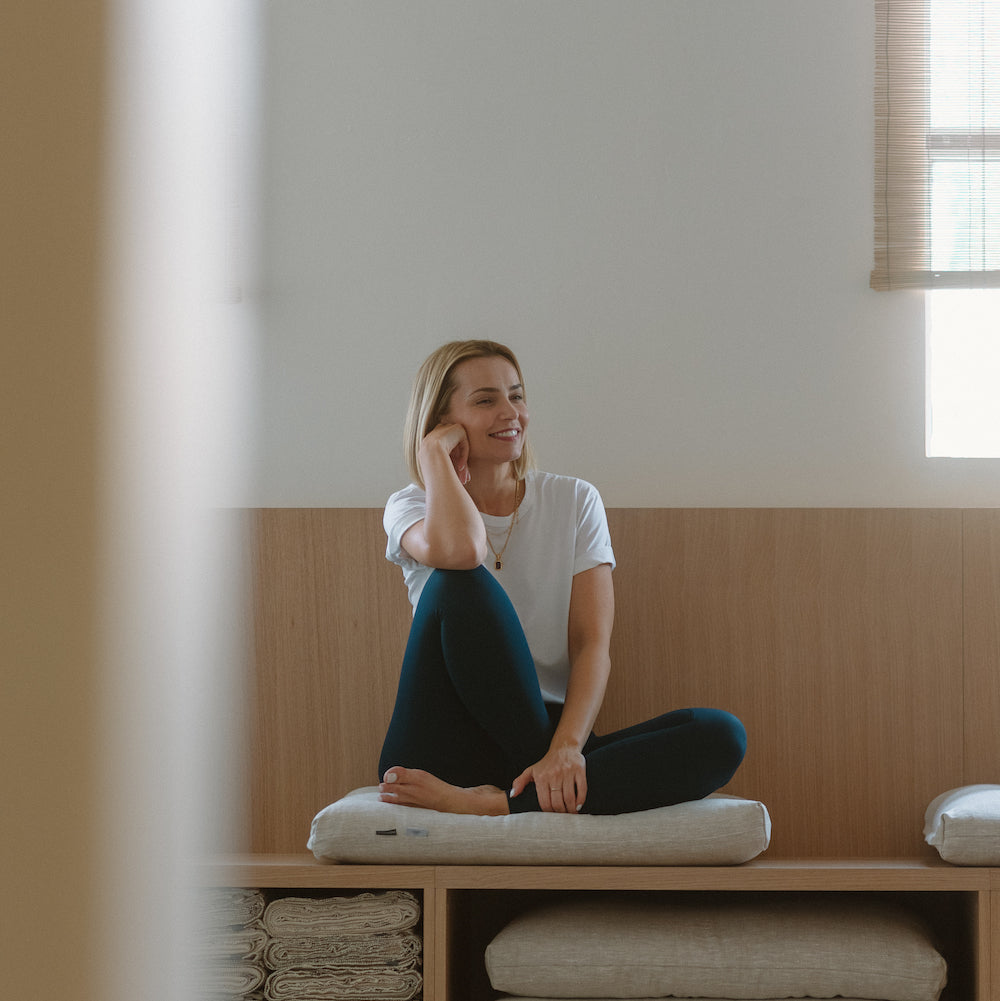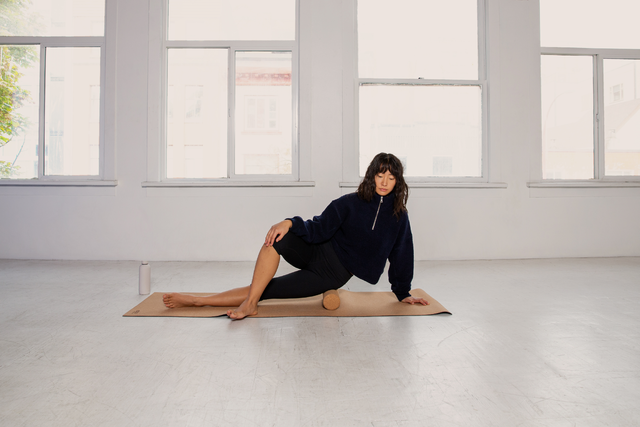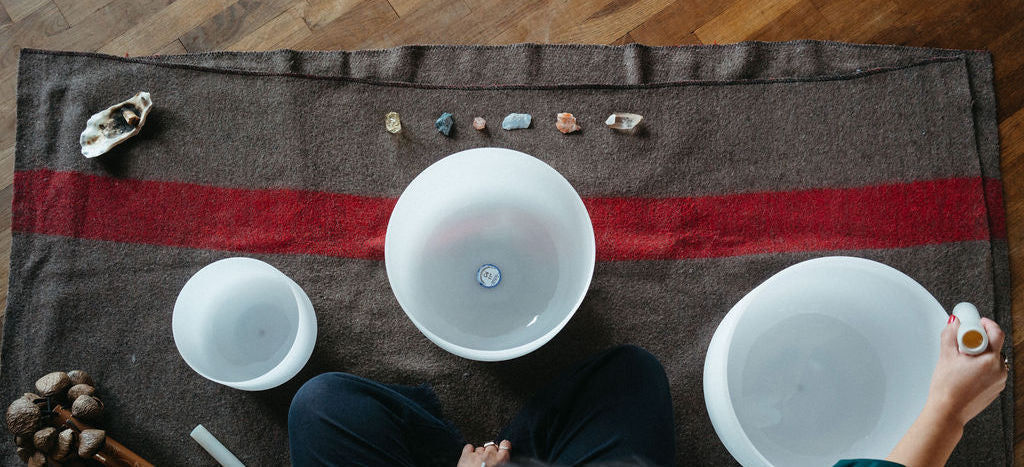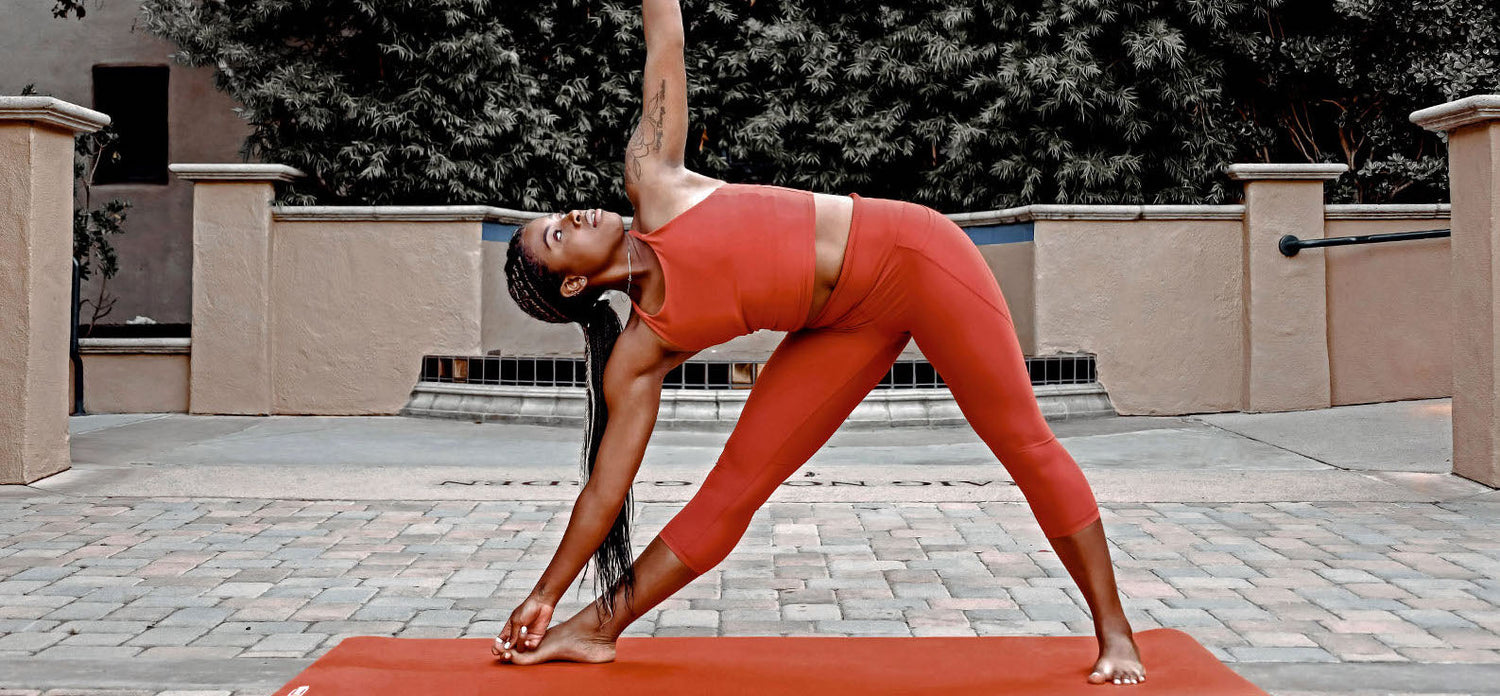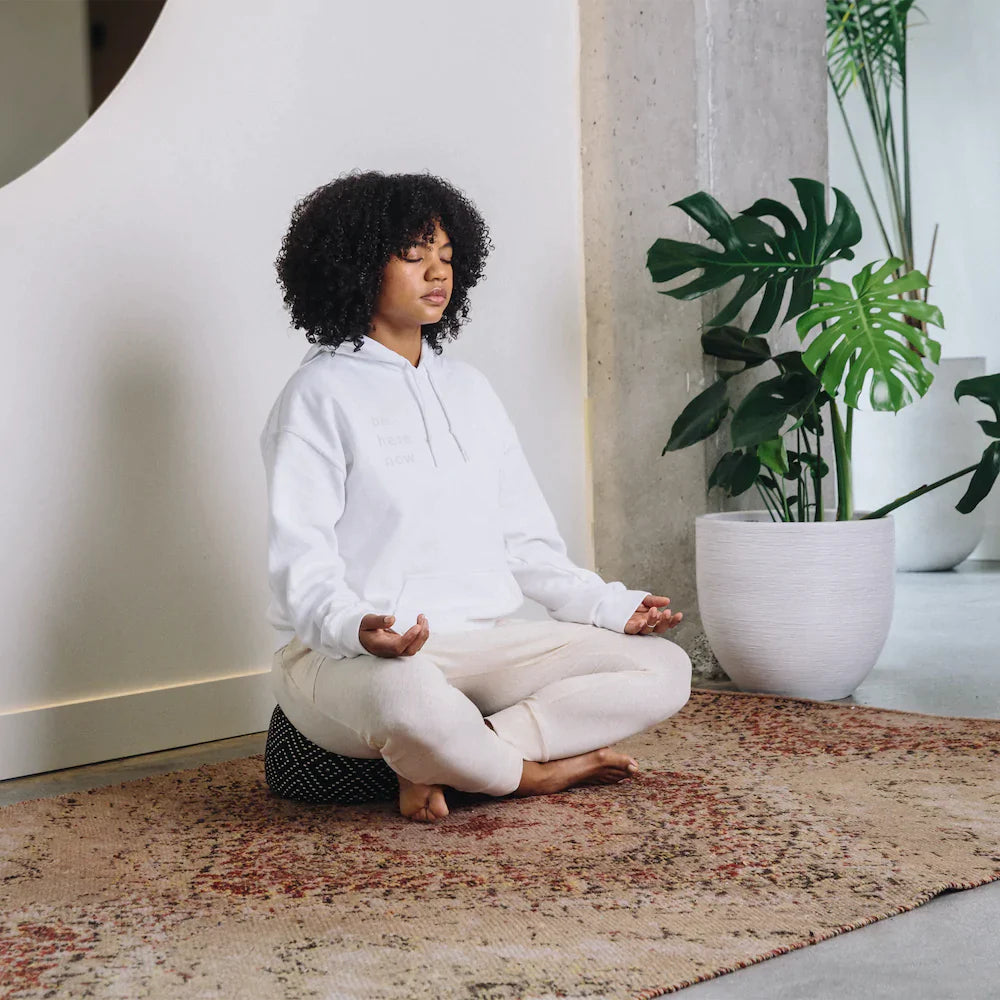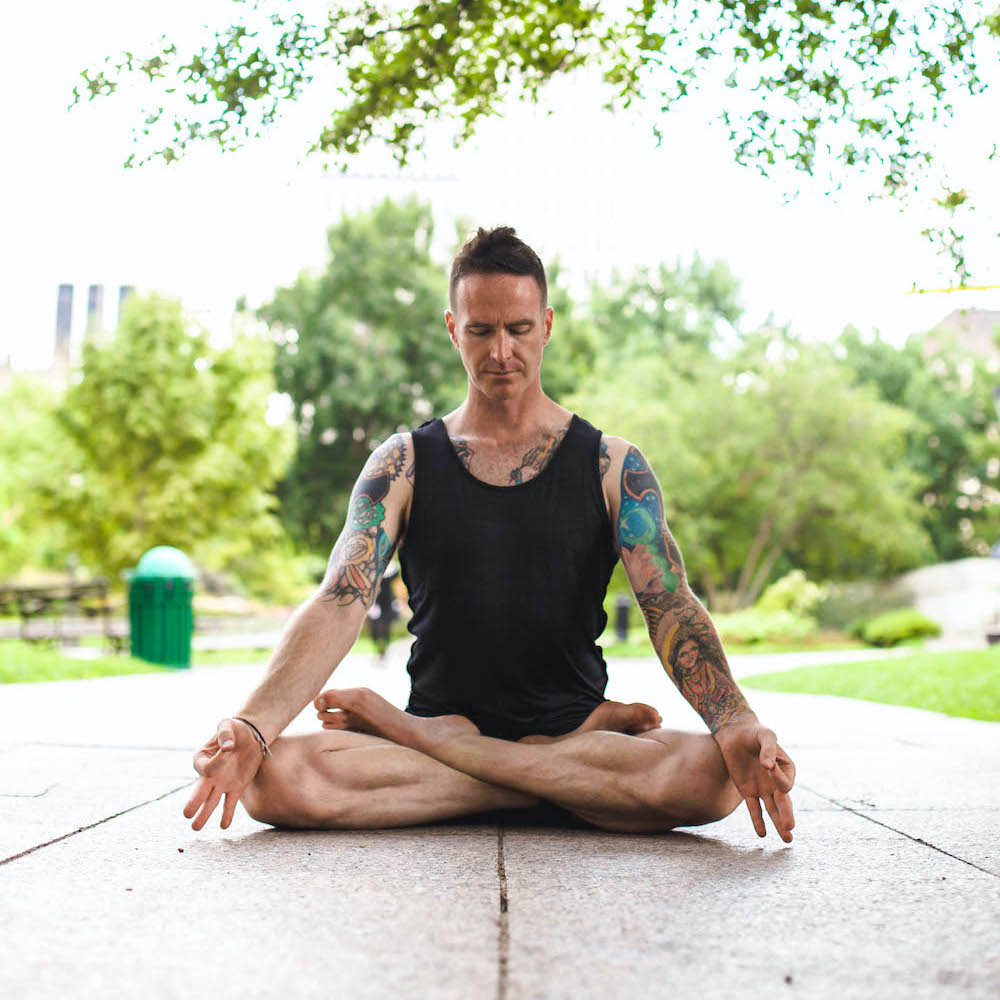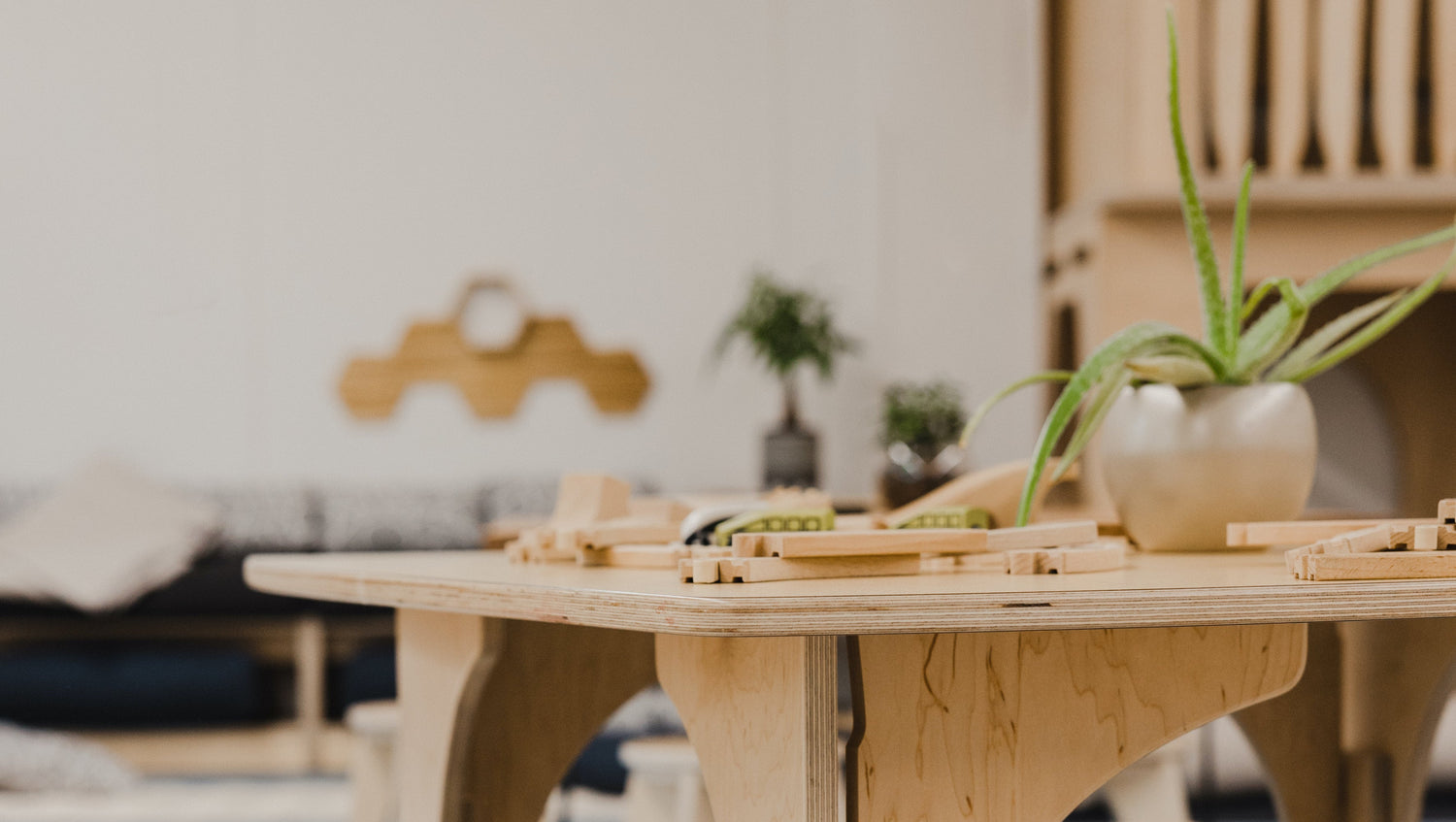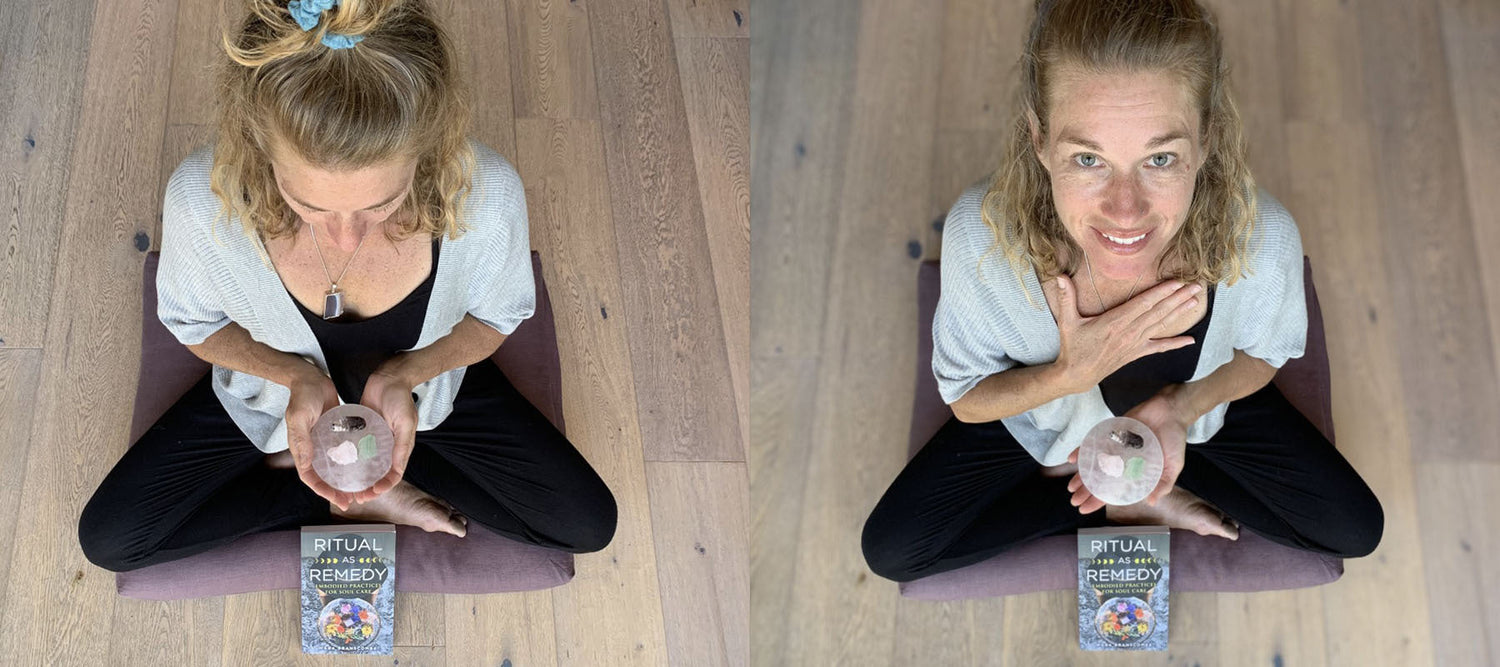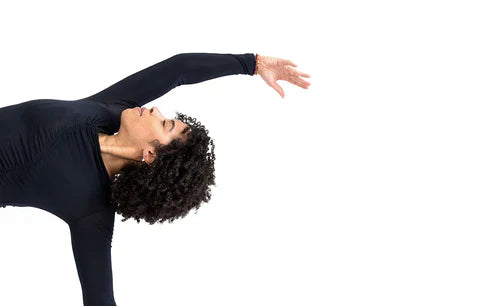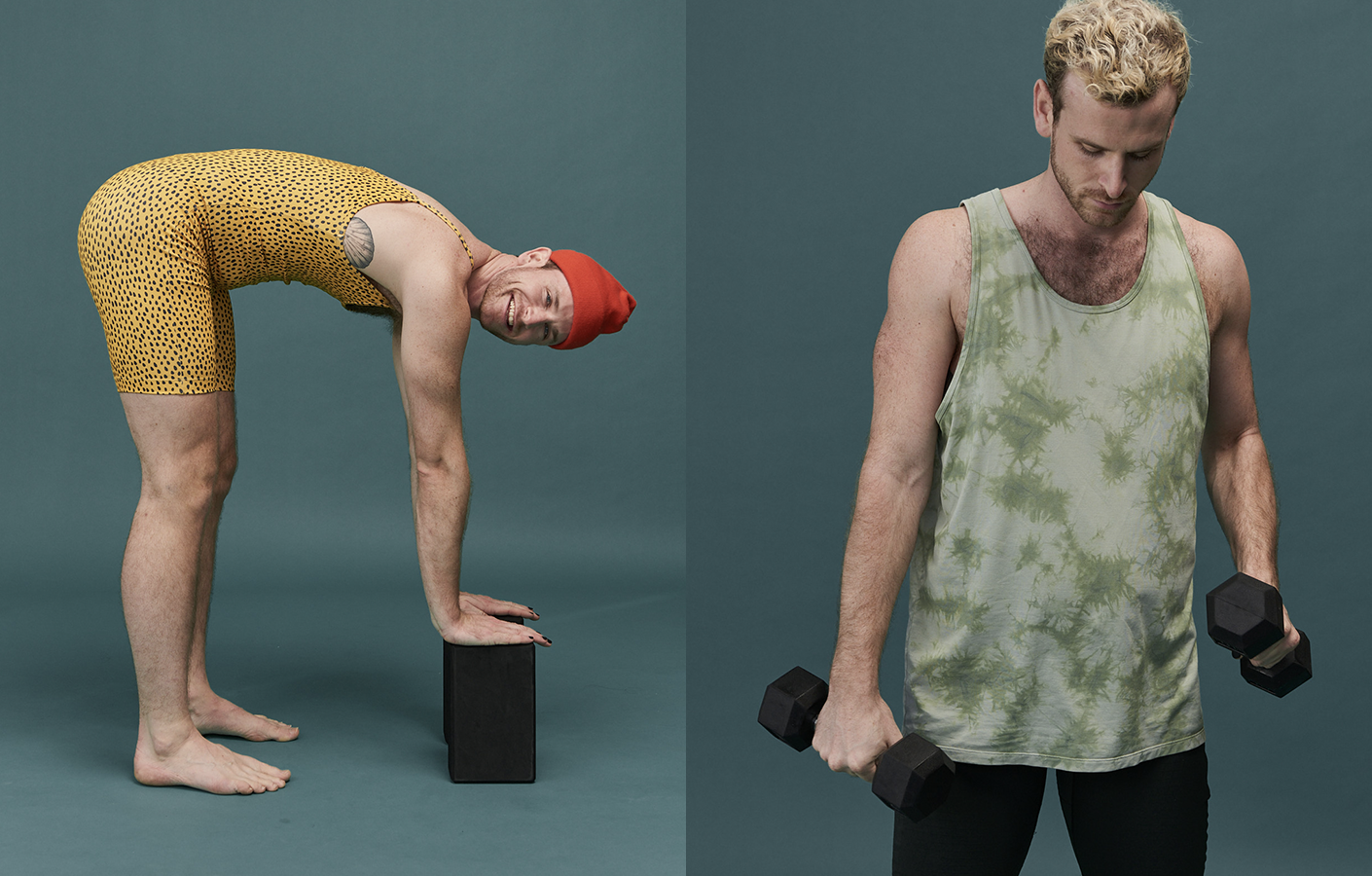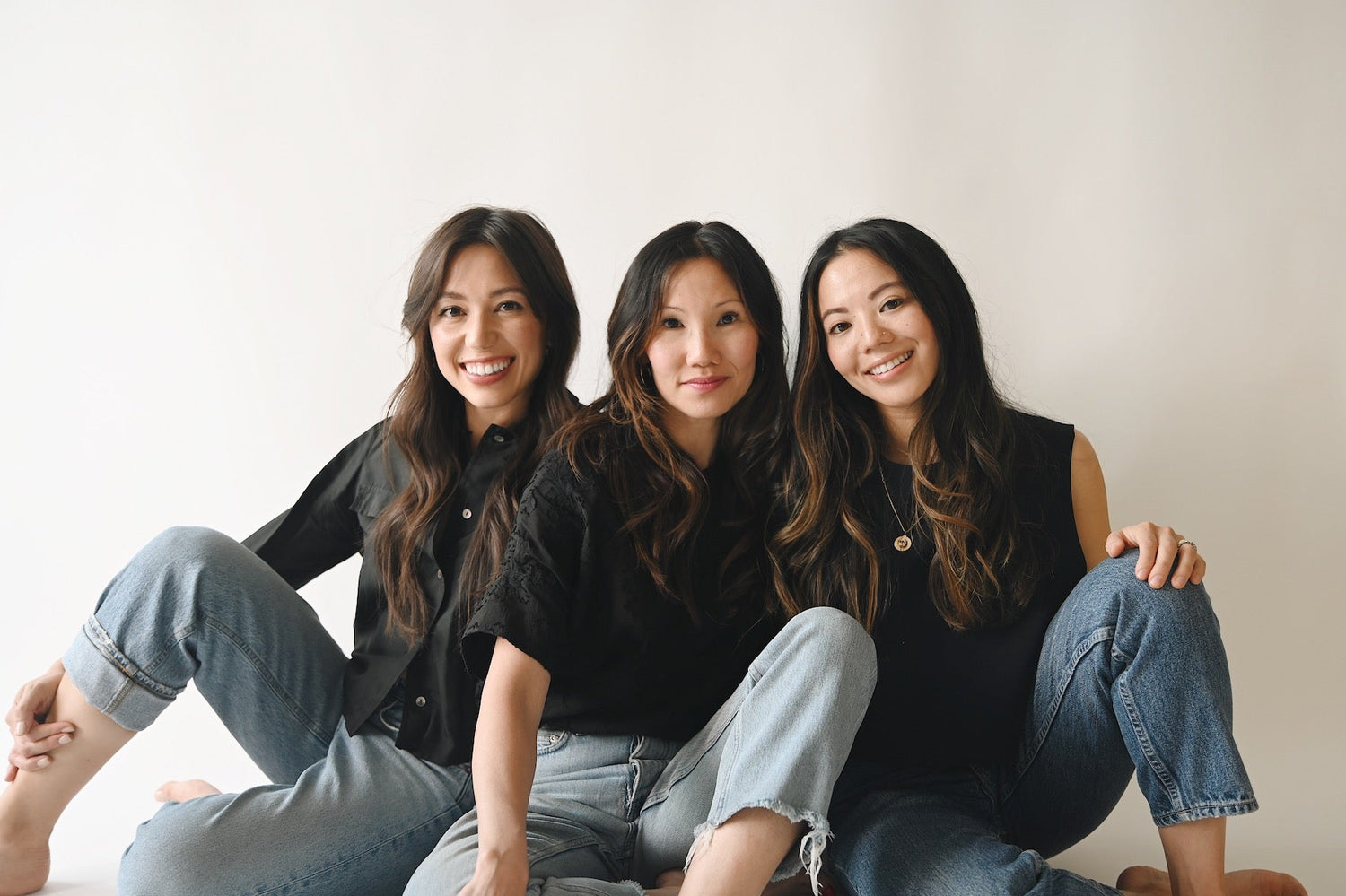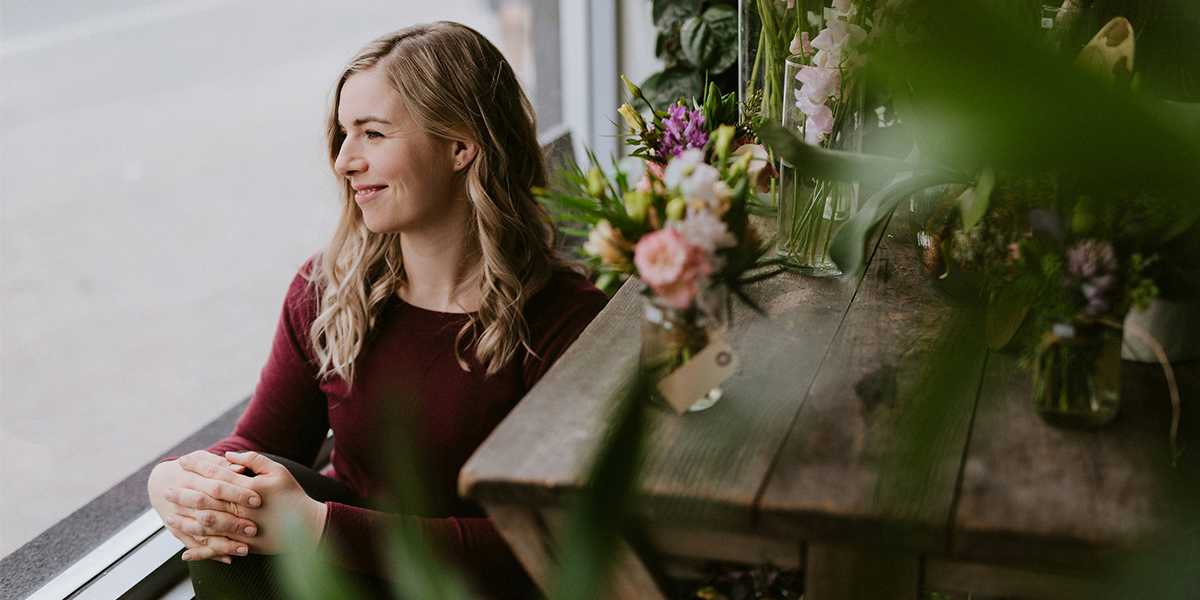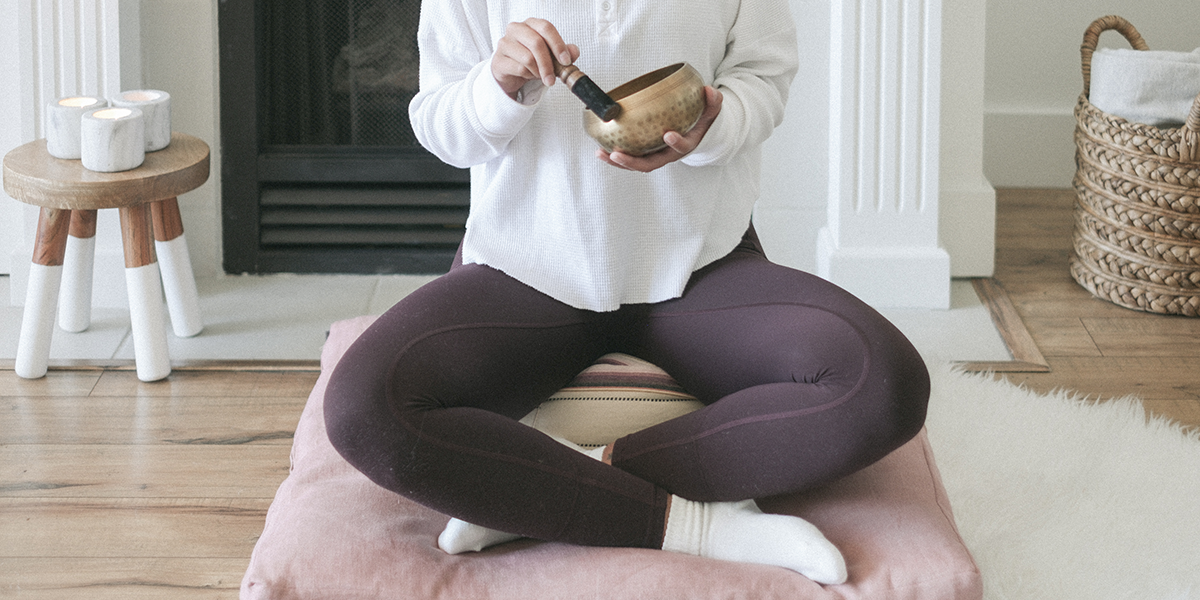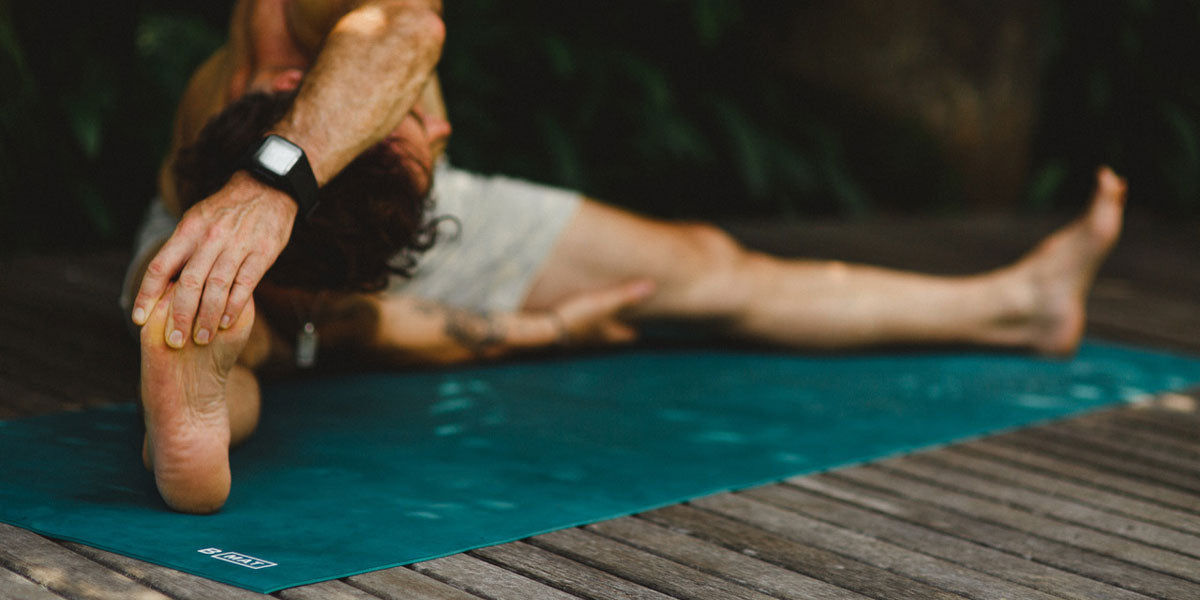There are many ways to sit in meditation.
In general, the ideal meditation position for you will have your pelvis higher than your hips, your spine well-aligned with its natural curves maintained, your chin tucked, and your shoulders back and relaxed. You want to feel stable in your position and free to be mindful, not distracted by your body.
To minimize strain on the body, we recommend changing which leg is in front (if you meditate in a cross-legged, Burmese, or lotus posture), or switching positions altogether (e.g. meditating cross-legged one day, kneeling the next) every time you practice.
Here are some time-honoured meditation positions. The "right" position for you is the one that feels most comfortable for your body.
Cross-Legged
Also known as the easy position, the cross-legged position involves simply sitting on a cushion with your legs crossed in front of you.
This position is best for short periods of meditation because it is unstable and very difficult to sit with a straight spine. This can be helped to some extent by propping your knees up with additional cushions. Reduce the height of the cushions as your hip flexibility increases and your knees get closer to the ground.
When your knees can touch the ground in the cross-legged position, move on to the Burmese position.
Burmese
The Burmese position is similar to the cross-legged position, except instead of crossing the ankles, they're placed one in front of the other.
The Burmese position is more stable than the cross-legged position, but still less stable than the lotus positions. As your hip flexibility increases, give the lotus positions a try.
Quarter- and Half-Lotus
The lotus variations involve sitting on a cushion and stacking one leg on top of the other. In quarter-lotus one foot is placed on the opposite leg's calf, while in half-lotus, the foot is placed on the opposite leg's thigh.
The lotus variations are almost as stable as lotus itself.
Lotus
The classic meditation posture, the lotus position is the most stable of all the postures we've looked at so far.
In lotus position, sit on a cushion and placed each foot on the opposite leg's thigh so that the bottoms of both feet face the sky.
Please be very cautious and stretch thoroughly before attempting the lotus position, as it requires a lot of flexibility. Your leg rotation should come from the thigh joint, not the knee joint. If you feel pain in your knees, switch to a less intense position.
Kneeling
The kneeling position is stable and can be done using no props at all. However, it can also be hard on the knees and become uncomfortable quickly.
Adding some support makes the kneeling position much easier on the body. Try placing a meditation cushion between your bottom and your legs, or straddling a meditation cushion in a kneeling position.

